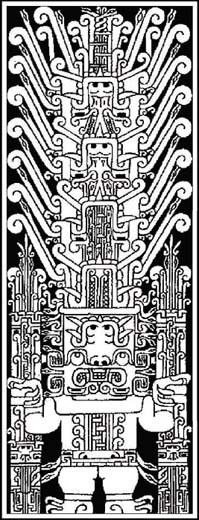Art of the Ancient World, C. 5000 B.c.e.–400 C.E.Aegean Art |
What is Aegean art? |
The term Aegean art refers to the art of three major Mediterranean cultures which predate Ancient Greece: the Cycladic culture, the Minoans, and the Mycenaeans. Together, these groups are referred to as the Aegean Civilization and flourished during the Bronze Age, c. 3000–1200 B.C.E. The Cycladic culture established itself on a group of small islands known as the Cyclades, while the Minoans lived on the island of Crete. The later Mycenaeans were based on mainland Greece. Aegean art is quite enigmatic and is characterized by lively sculptures and wall paintings which mirror the natural world and the warmth of the Mediterranean.

The Raimondi Stela depicts a Staff God of the Chavin culture, which flourished in the Andes mountains between 1500 and 300 B.c.E.The complex, repetitive patterns of the image incorporate animal and organic designs.
